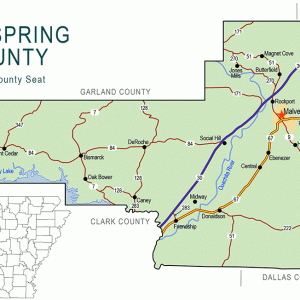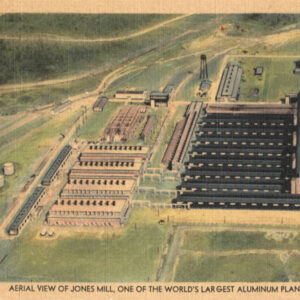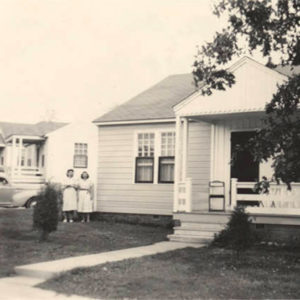calsfoundation@cals.org
Jones Mills (Hot Spring County)
Jones Mills is a northern Hot Spring County community named after an aluminum reduction plant that located there in the 1940s. It is sometimes incorrectly known as Jones Mill.
Ancestors of the Caddo Indians inhabited the Jones Mills area between 6000 BC and AD 1450. Archaeological explorations of Jones Mills in 2007 and 2008 provided evidence that helps archaeologists understand how life transitioned from the Archaic through the Mississippian periods. Radiocarbon testing of burned hickory nutshells dates the area back to the Middle Archaic period and also indicates the importance of nuts to the Native American diet. While the archaeological digs have not yet determined whether Indians lived in the area year-round, it does establish that people were in the Jones Mills community during the fall and winter, then again in the spring and summer for fishing.
By 1450, Caddo were living year-round at Jones Mills. In addition to collecting nuts, hunting, and fishing, they were growing corn. The digs also uncovered additional plant and animal varieties in garbage left near a Caddo house.
Until the 1920s, Jones Mills was timberland, corn fields, and a few homes. The introduction of hydroelectricity changed that. In 1924, Harvey Couch’s Arkansas Power and Light (AP&L) company (now Entergy Arkansas) constructed Remmel Dam in Jones Mills. As the first major hydroelectric facility in the state, the dam is included on the National Register of Historic Places.
Construction of the dam brought jobs to the area, as well as electricity and a new lake, Lake Catherine. During the Great Depression, the Civilian Conservation Corps (CCC) created Lake Catherine State Park. Five CCC-constructed cabins are still used as rental cabins at the state park in the twenty-first century.
Highway 270 through Jones Mills was improved, thanks to Couch’s relationship with federal officials. President Franklin D. Roosevelt visited Couch’s Lake Catherine home in 1936, then made his way to Rockport (Hot Spring County) and Malvern (Hot Spring County). In preparation for the president’s visit, Highway 270 was paved.
Alcoa moved into Jones Mills in the 1940s, buying sixty acres of land to construct an aluminum reduction facility. Housing was built to accommodate aluminum plant employees. A labor union, United Steelworkers of America Local 6794, which was located on Highway 270, served employees of the metals industry. According to a January 24, 1943, Arkansas Gazette article, the facility was by that point producing aluminum from Arkansas bauxite.
General Cable and Reynolds Packaging Group are the aluminum-related industries that remain in Jones Mills in the twenty-first century. The Arkansas Midland Railroad, established in 1992, serves distribution needs in the region.
For additional information:
Cannon, Anthony. “How Jones Mills Got the Name.” The Heritage 45 (2018): 59–60.
Wallace, Michelle. “Jones Mill.” The Heritage 37 (2010): 77–78.
Ronna Pennington
Hot Spring County Historical Society
 Hot Spring County Map
Hot Spring County Map  Jones Mill Plant
Jones Mill Plant  Jones Mills Street Scene
Jones Mills Street Scene 




Our home is dusted every week from the Jones Mill plant! You can see the ore dust coming out of the chimney. This is the most awful covering of dust I have ever had to breathe! I live two miles away on a paved highway. What is coming out of the chimney and making us sick?
It should be noted that U.S. Highway 270 and Arkansas Highway 51 switched after the four-lane of 51 was complete (unsure of date, late 1980s or early 1990s) from the foot of Jack Mountain to Rockport. The original 270 traveled through Magnet Cove and 51 went through Jones Mills.
General Motors once had a plant there, building transmissions for their cars. It used to be located where the cable plant is now.